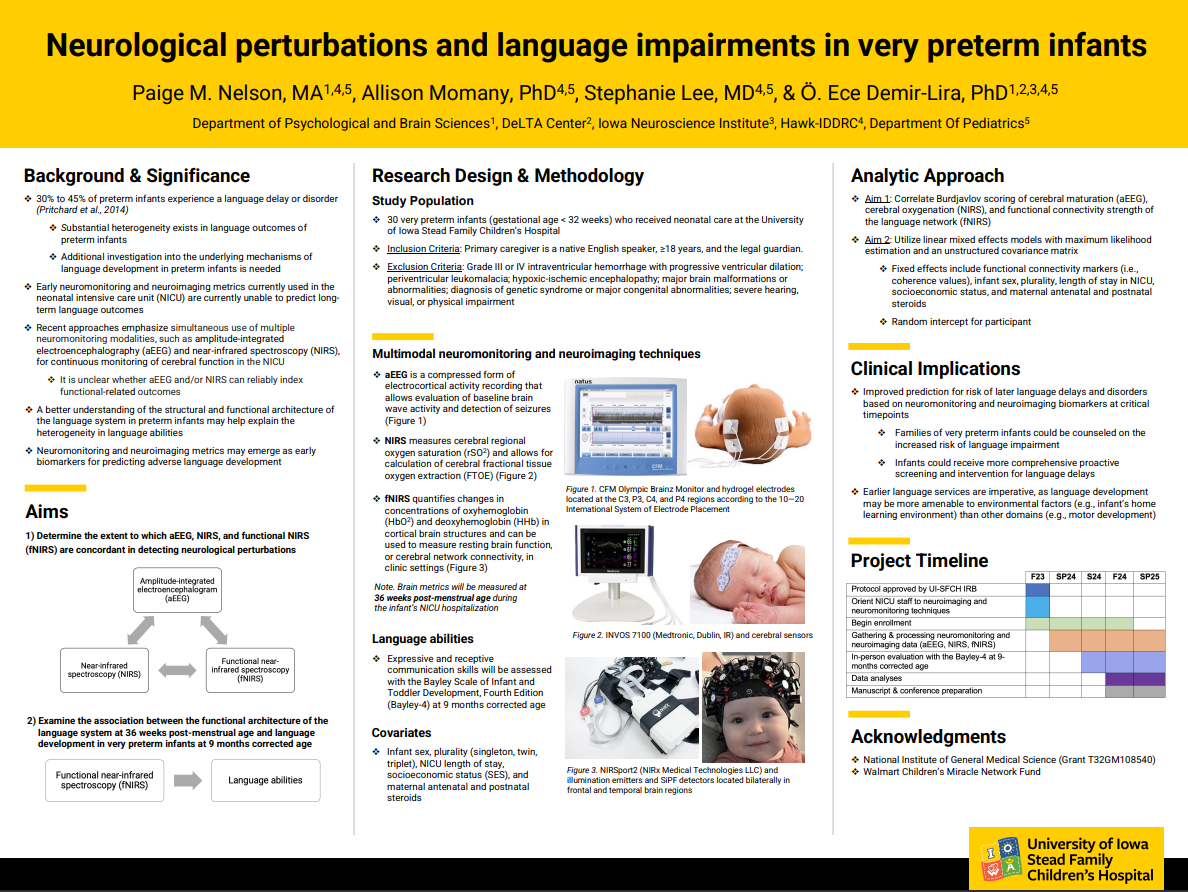
Background: Globally, around 15 million newborns are born preterm (< 37 weeks of gestation) every year.1 Due to recent medical advances in neonatology, the survival rates for preterm newborns have risen threefold. The significant increase in survival rates has also made preterm birth the number one cause of short-term and long-term neurodevelopmental impairment in children2, including language deficits and disorders. Prior approaches aiming to understand the mechanisms that underlie the variability in the language development of preterm infants have been met with limited success, suggesting the need for a novel set of predictors. Neuropathological biomarkers collected in the NICU have the potential to predict later delays. However, neuromonitoring data is not available for all infants, and its relations to longer-term outcomes remain unknown.3 Thus, the proposed study aims to provide a multi-disciplinary approach by examining noninvasive monitoring and imaging techniques that could potentially become a vital part of neonatal neurocritical care to examine risk factors for adverse language outcomes.
Aims: As part of this proposed study, we aim to 1) determine the extent to which near-infrared spectroscopy (NIRS), amplitude-integrated electroencephalogram (aEEG), and functional NIRS (fNIRS) are concordant in detecting neurological perturbations and 2) examine the association between the functional neuroarchitecture of the language system and language skills in very preterm infants (≤32 weeks of gestation).
Methods: The cohort for this study will include very preterm infants that were delivered at or before 32 weeks gestational age and received neonatal care. NIRS, aEEG, and fNIRS will be measured at 36 weeks post-menstrual age during the infant’s NICU hospitalization. Concurrent NIRS recording will be leveraged to examine average cerebral regional oxygen saturation (rSO2) and cerebral fractional tissue oxygenation extraction (FTOE). Cerebral maturation will be assessed using the Burdjalov scoring system on aEEG recordings. Resting-state functional connectivity of the language network will be assessed using functional near-infrared spectroscopy (fNIRS). Language abilities will be measured via a standardized, clinician-administered assessment when the infant is 9 months corrected age.
Anticipated Results: Our working hypotheses are that 1) delayed cerebral maturation with normal cerebral oxygenation will be associated with abnormal functional architecture of the language system at 36 weeks post-menstrual age and 2) higher levels of atypicality in the functional architecture of the language system at 36 weeks post-menstrual age will be associated with poorer language abilities.
Conclusion: Improved prediction of risk for later language delays based on early neuromonitoring biomarkers at critical timepoints may lead to precision-focused preventative neurological care of very preterm infants. Unveiling the etiological mechanisms that influence language development in preterm-born children may pave the way for novel opportunities for prevention and intervention efforts to benefit later development.
Click here for a downloadable PDF